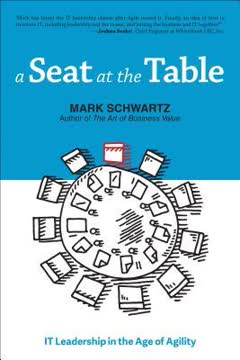Key Takeaways
1. Business value is central to Agile, yet poorly defined
"Business value, critical but elusive, remains at large. Our first set of clues leads nowhere."
Agile's core principle is maximizing business value, emphasizing early and continuous delivery of valuable software. The Agile Manifesto and prominent Agile thinkers like Ken Schwaber, Kent Beck, and Jim Highsmith all stress the importance of delivering business value. However, most Agile literature sidesteps the question of what exactly business value is, assuming it will be determined by "the business" or a product owner.
Conflation of terms further complicates the issue:
- Business value
- Customer value
- User value
These are often used interchangeably, but they can mean different things. For example, features valuable to customers may not always align with business goals, and internal software may have business value without direct customer or user value.
2. ROI is an inadequate measure of business value
"Even if ROI were a good proxy for business value, it would not be very useful to product owners for prioritization decisions."
ROI's limitations as a measure of business value include:
- Focuses on short-term profits, ignoring long-term impacts
- Doesn't account for the timing of cash flows
- Ignores risk and uncertainty
- Based on financial accounting, not managerial decision-making
- Poorly correlated with shareholder value
Practical challenges in using ROI for feature prioritization:
- Difficult to assign value to individual user stories
- Values of features are often intertwined
- Revenue allocation on a feature-by-feature basis is challenging
- Side effects and cannibalization of other products are hard to predict
3. Net Present Value (NPV) falls short for many organizations
"NPVs as they are taught to business school students are not the right way to think about business value anyway."
NPV basics:
- Considers cash flows, timing, risk, and opportunity cost
- Discounts future cash flows based on risk and time value of money
- Positive NPV indicates a good investment
NPV limitations:
- Assumes profit maximization is the primary goal
- Difficult to accurately estimate future cash flows and risks
- May not capture non-financial aspects of value
- Doesn't account for strategic considerations or mission alignment
Example: An MBA program with negative NPV (-$49,000) illustrates how NPV can fail to capture the full value of an investment, as it doesn't account for intangible benefits or long-term career prospects.
4. Business value varies across different types of organizations
"The moral of the story is that, as the owners of the company, they had the right to declare business value to be anything they wanted. It was their company!"
Business value in different contexts:
- Public companies: Often focus on shareholder value (MVA or SVA)
- Private companies: May prioritize owners' vision over pure profit
- Venture-backed startups: Focus on growth, market share, and future valuations
- Nonprofits: Mission accomplishment and liquidity targets
- Government agencies: Mission performance, public value, and political considerations
Example: Intrax Cultural Exchange's owners refused to divest an unprofitable business unit because it aligned with their vision of international education, demonstrating how business value can diverge from pure financial metrics.
5. Agile teams must understand and interpret business value
"We cannot think of business value as something determined outside the team by something called the business and then simply presented or 'tossed over the wall' to the team in the form of user stories, prioritization, and feedback on product as it is produced."
Evolving role of Agile teams:
- Move beyond just executing pre-defined requirements
- Actively participate in understanding and interpreting business value
- Collaborate with product owners and stakeholders to define value
Implications for Agile practice:
- Teams need deeper business context and understanding
- Continuous dialogue about value throughout development process
- Shared responsibility for value delivery between team and product owner
6. Value delivery extends beyond feature completion
"Releasing code is not the same thing as delivering business value; to know that we have delivered business value, we must both understand what business value is and be attentive to outcomes."
Shift in focus:
- From completed user stories to actual business outcomes
- From feature delivery to value realization
Key considerations:
- Monitoring and measuring the impact of deployed features
- Iterating based on real-world usage and feedback
- Aligning development efforts with desired business outcomes
7. Business value includes future agility and options
"Part of the business value that software development can give us is the ability to respond to unknown future needs."
Expanding the concept of value:
- Building flexibility and adaptability into solutions
- Creating "real options" for future investments
- Valuing validated learning about the market and users
Implications for development:
- Architecting for change and extensibility
- Prioritizing technical practices that enable rapid iteration
- Balancing immediate needs with long-term flexibility
8. Cultural context shapes the meaning of business value
"The strange notions of value expressed by each of these organizations actually made sense in their contexts."
Value is culturally defined:
- Organizational culture influences what is considered valuable
- Industry norms and practices shape value perceptions
- Regulatory environments can dictate aspects of value
Examples of cultural influence:
- Startup culture valuing growth over profitability
- Government agencies balancing mission with public accountability
- Nonprofits focusing on mission impact and sustainability
9. IT leadership's role in delivering business value is evolving
"Have you noticed all the books telling CIOs how to be better CIOs? I have, because I'm a CIO. Mostly they say that the CIO should grab a 'seat at the table' (that's the executive table, where the grown-ups sit)."
Changing landscape for IT leaders:
- From project delivery to strategic value creation
- From control-oriented to enablement-focused
- From technology management to business outcome driving
New responsibilities:
- Interpreting and shaping the organization's understanding of business value
- Aligning IT capabilities with strategic objectives
- Fostering a culture of continuous value delivery and innovation
Challenges:
- Balancing traditional IT responsibilities with strategic leadership
- Demonstrating IT's value contribution beyond project metrics
- Navigating the evolving relationship between IT and "the business"
Last updated:
FAQ
What is A Seat at the Table by Mark Schwartz about?
- IT Leadership Transformation: The book explores how IT leadership, especially the CIO role, must evolve in the age of Agile, Lean, and DevOps, moving away from traditional command-and-control models.
- Bridging IT and Business: Schwartz discusses the historical separation between IT and business, advocating for a unified, outcome-driven partnership.
- Agile and Value Creation: It emphasizes aligning IT leadership with business strategy to create value, manage uncertainty, and foster continuous learning.
- Practical Guidance: The book offers actionable advice on governance, planning, risk, and organizational design from an Agile perspective.
Why should I read A Seat at the Table by Mark Schwartz?
- Unified Leadership Perspective: The book fills a gap by integrating IT leadership and Agile thinking, providing a roadmap for leading IT in modern organizations.
- Actionable and Hopeful: Schwartz shares practical insights and lessons from his own career, empowering IT leaders to drive change and deliver business value.
- Relevant for Multiple Roles: Whether you’re a CIO, IT leader, Agile practitioner, or executive, the book offers valuable strategies for digital transformation.
- Challenges Old Paradigms: It encourages readers to question entrenched assumptions about control, governance, and requirements that hinder agility.
What are the key takeaways from A Seat at the Table by Mark Schwartz?
- IT as Outcome Driver: IT leadership should focus on delivering business outcomes, not just IT projects or services.
- Leadership Through Influence: CIOs must lead by vision, influence, and enabling conditions, rather than command-and-control.
- Community and Collaboration: Agile IT thrives on shared ownership, collaboration, and breaking down silos, including embracing shadow IT and open source principles.
- Quality, Risk, and Courage: Impeccable delivery, sound risk management, and courageous leadership are essential for success in the Agile age.
How does Mark Schwartz define the evolving role of the CIO in A Seat at the Table?
- Strategic Business Partner: The CIO is responsible for business outcomes enabled by technology, not just IT delivery.
- Manager of Uncertainty: CIOs must navigate risk and uncertainty, making informed decisions in complex adaptive systems.
- Steward of Assets: They oversee enterprise architecture, IT talent, and data, ensuring alignment with business strategy and adaptability.
- Influencer and Orchestrator: The CIO leads through influence, relationship-building, and creating conditions for self-organizing teams to succeed.
How does A Seat at the Table by Mark Schwartz describe the relationship between IT and the business?
- From Separation to Integration: The book critiques the traditional contractor-control model, where IT is a service provider to the business.
- Agile Blurs Boundaries: Agile and DevOps practices encourage close collaboration, shared ownership, and continuous value delivery.
- Partnership and Community: Schwartz advocates for IT and business to function as one community, working together toward strategic goals.
- Continuous Dialogue: Honest, ongoing conversations replace rigid contracts and requirements, fostering mutual understanding and adaptability.
What is the significance of Agile, Lean, and DevOps in A Seat at the Table by Mark Schwartz?
- Core Principles: Agile empowers teams to inspect and adapt; Lean eliminates waste and accelerates feedback; DevOps integrates development and operations for continuous delivery.
- Shift to Continuous Flow: These approaches move organizations from large, discrete projects to incremental, ongoing value delivery.
- Empowerment and Motivation: Agile, Lean, and DevOps emphasize people, collaboration, and rapid learning over rigid processes.
- Foundation for Leadership: Schwartz sees these practices as essential for reimagining IT leadership to align with business strategy.
How does A Seat at the Table by Mark Schwartz approach planning and requirements in an Agile context?
- Flexible Planning: Plans are tools for communication and learning, not rigid contracts.
- Requirements as Hypotheses: Desired outcomes are treated as hypotheses to be tested and refined through feedback and experimentation.
- Impact Mapping: The book highlights methods like Impact Mapping to focus on business impacts and explore multiple paths to value.
- Continuous Discovery: Agile teams work with stakeholders to incrementally discover and deliver the most valuable capabilities.
What is Mark Schwartz’s view on Enterprise Architecture in A Seat at the Table?
- EA as Economic Asset: Enterprise Architecture is seen as a dynamic asset that supports business strategy and competitive advantage.
- Beyond Control: Schwartz moves away from EA as a tool for standardization and control, advocating for agility and continuous transformation.
- Stewardship Role: IT leaders are responsible for grooming EA to maximize flexibility, quality, and business alignment.
- Enabler of Agility: A well-managed EA reduces technical debt and supports rapid adaptation to market changes.
How does A Seat at the Table by Mark Schwartz address the build versus buy decision in IT?
- Challenging Conventional Wisdom: The book questions the default “buy off-the-shelf” approach, especially in fast-changing environments.
- Software as Ongoing Service: Buying software is seen as acquiring ongoing services with uncertain fit and future costs, not just a one-time product.
- Custom Development Benefits: Advances in technology have reduced the cost and risk of building custom, adaptable systems.
- Fit with Enterprise Architecture: The decision should consider long-term alignment with business needs and the impact on enterprise architecture.
What does A Seat at the Table by Mark Schwartz say about quality and risk management in Agile IT leadership?
- Impeccability Over Perfection: Quality means doing the best possible work with minimal waste, not striving for zero defects.
- Shift Left Testing: Quality improves when testing and defect detection happen earlier, with developers owning quality through automation and peer review.
- Risk as Uncertainty: IT work is inherently uncertain; good leadership manages risk through fast feedback and experimentation.
- Failures as Learning: Failures are expected and manageable if processes are sound; repeated failures indicate deeper issues.
How does Mark Schwartz define and advise handling shadow IT in A Seat at the Table?
- Shadow IT as Innovation: Shadow IT arises when business needs outpace IT’s capacity; it can be a source of innovation and enthusiasm.
- Enablement Over Control: Instead of fighting shadow IT, leaders should empower and enable it while managing risks like security and maintainability.
- Community Model: Embracing open source principles and internal code sharing fosters collaboration and breaks down silos.
- Business Value Alignment: Supporting shadow IT helps bridge the business-IT divide and aligns IT leadership with enterprise value creation.
What practical advice does Mark Schwartz offer for IT governance and organizational change in A Seat at the Table?
- Outcome-Focused Governance: Shift from funding large, fixed-scope projects to investing in outcomes and impacts, enabling more adaptive decisions.
- Continuous Transparency: Use real-time metrics and frequent reviews to inform governance and support Agile delivery.
- Beyond Budgeting: Adopt flexible, continuous resource allocation instead of rigid annual budgets to support Agile teams.
- Incremental Culture Change: Provoke and observe incremental changes, learning from existing culture and adapting Agile practices accordingly.
Review Summary
A Seat at the Table explores the changing role of IT leadership in modern organizations. Schwartz argues for moving beyond the traditional contractor-control model, advocating for IT to be an integral part of business strategy. The book discusses Agile and Lean principles applied to IT management, emphasizing value creation over proving IT's worth. Readers appreciate Schwartz's insights on IT's evolving role but some find the philosophical digressions and repetition frustrating. Overall, it's considered a valuable read for IT leaders, though opinions vary on its practical applicability and depth of content.
Similar Books










Download PDF
Download EPUB
.epub digital book format is ideal for reading ebooks on phones, tablets, and e-readers.






